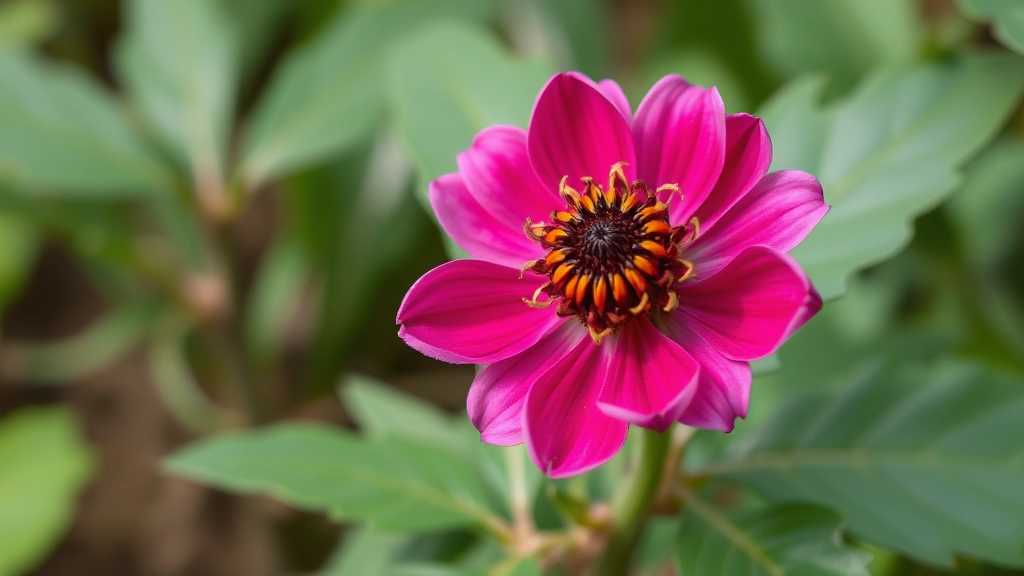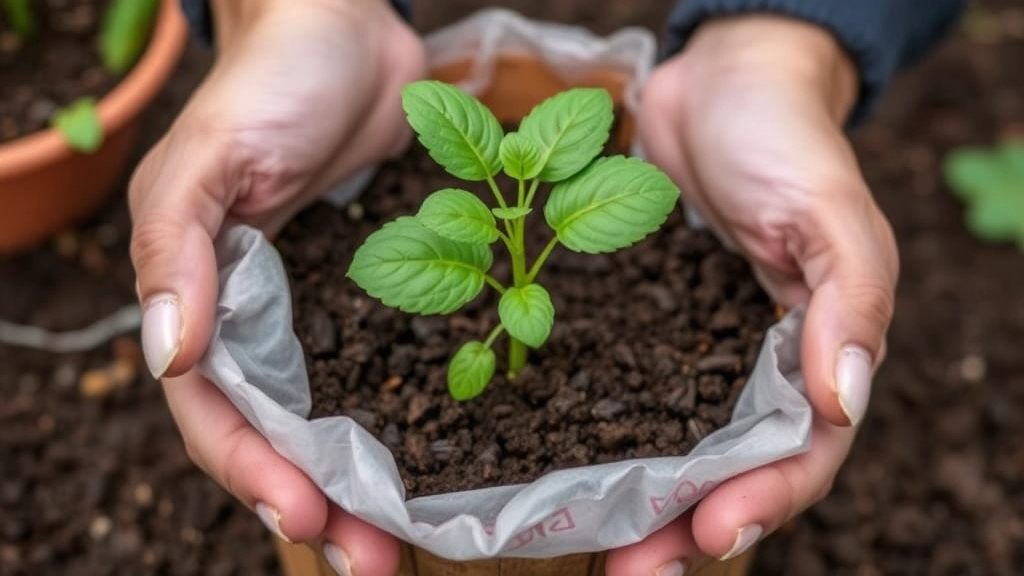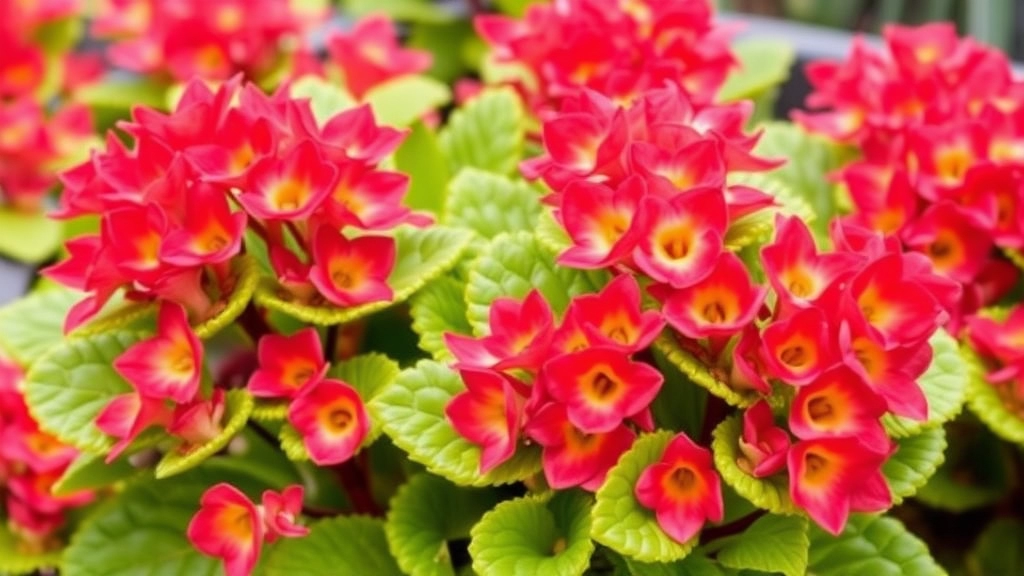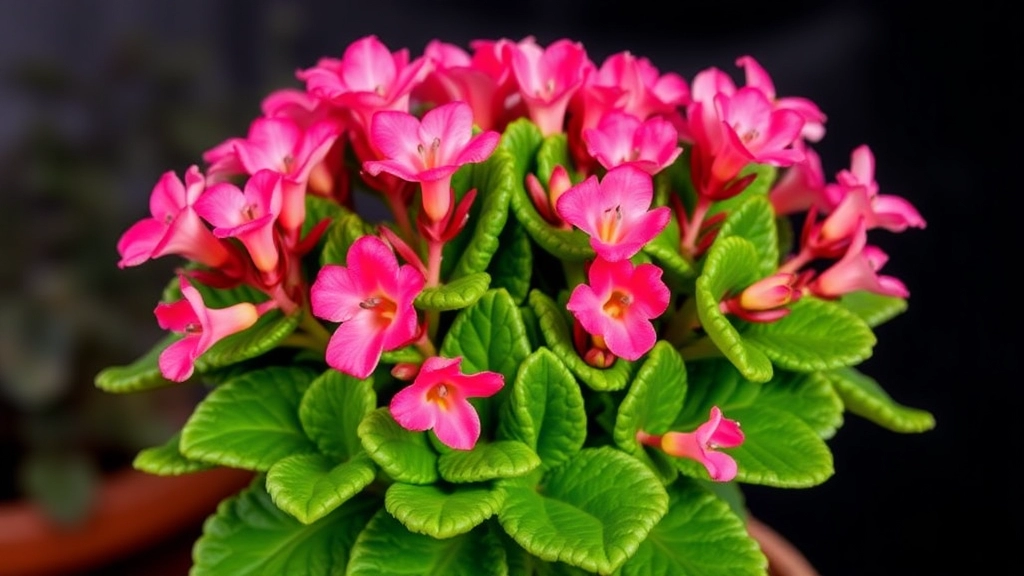Welcome, plant enthusiasts!
Today, we’re diving into the vibrant world of Kalanchoe flammea, a fiery beauty that’s been catching eyes and stealing hearts. As a succulent aficionado, I’m thrilled to share my insights on this stunning plant, from its eye-catching blooms to its easy-care nature.
In this article, we’ll explore everything you need to know about Kalanchoe flammea – its botanical characteristics, ideal growing conditions, propagation methods, and more. Whether you’re a seasoned gardener or a curious newcomer, you’ll find valuable tips to help this flaming beauty thrive in your space. Let’s ignite your passion for this remarkable plant!
Overview of Kalanchoe flammea
Let’s chat about Kalanchoe flammea, a plant that’s caught my eye lately.
Ever seen those fiery orange blooms that light up a room? That’s our star today.
Kalanchoe flammea, also known as the Flaming Katy, is a real stunner.
It’s part of the Crassulaceae family, which is fancy talk for succulents.
This beauty hails from Madagascar, where it’s used to hot and dry conditions.
But don’t let that scare you off – it’s surprisingly easy to grow at home.
I’ve found it’s a great plant for beginners or busy folks.
It’s got thick, fleshy leaves that store water, making it pretty forgiving if you forget to water it.
The real show-stopper? Those clusters of bright orange flowers.
They bloom for weeks, sometimes months, giving you a long-lasting pop of colour.
I’ve used these to brighten up my office, and let me tell you, they’re a conversation starter.
Whether you’re a plant newbie or a green-thumb pro, Kalanchoe flammea is worth a shot.
It’s low-maintenance, eye-catching, and just plain fun to have around.
So, ready to dive deeper into the world of Kalanchoe flammea? Let’s go!
Botanical Characteristics

Let’s dive into the nitty-gritty of Kalanchoe flammea, shall we? This little beauty’s got some serious charm, and I’m here to spill the beans on what makes it tick.
First off, we’re looking at a succulent that’s part of the Crassulaceae family. Now, don’t let that fancy name scare you off – it’s just a group of plants that are masters at storing water. Pretty handy, right?
Here’s the lowdown on what you’ll see when you get up close and personal with a Kalanchoe flammea:
- Leaves: Thick and fleshy (typical succulent style)
- Colour: Bright green with reddish edges (hence the ‘flammea’ part – it means fiery!)
- Shape: Oval to oblong, with scalloped edges
- Size: Usually grows up to 30-40 cm tall
But here’s where it gets really interesting. When this bad boy blooms, it’s like a fireworks show in your living room:
- Flowers: Clusters of small, tubular blossoms
- Colour: Vibrant orange-red (living up to its fiery name)
- Blooming season: Typically in winter to early spring
Now, you might be thinking, “Alright, sounds pretty, but what’s the big deal?” Well, let me tell you, this plant’s got more tricks up its sleeve than a magician at a kids’ party.
See, Kalanchoe flammea’s not just a pretty face. Its leaves have this cool waxy coating that helps it hold onto water like it’s going out of style. And those thick leaves? They’re not just for show – they’re like little water balloons, storing H2O for when times get tough.
But here’s the kicker: this plant’s got a secret weapon. It can reproduce through something called ‘leaf plantlets’. Basically, it grows baby plants on its leaves. How cool is that? It’s like nature’s version of “buy one, get a bunch free”.
So, there you have it – the Kalanchoe flammea in all its glory. It’s a tough little cookie with looks that could kill and a survival instinct that’d make Bear Grylls jealous. Whether you’re a green thumb or a plant killer, this succulent’s got what it takes to brighten up your space and maybe even survive your less-than-perfect care. Trust me, once you get to know Kalanchoe flammea, you’ll be as fired up about it as I am!
Ideal Growing Conditions
Let’s chat about how to keep your Kalanchoe flammea happy, shall we?
These fiery little succulents aren’t too fussy, but they do have some preferences.
Light
- They’re sun lovers, but not scorching midday sun fanatics
- Aim for bright, indirect light most of the day
- A bit of morning sun won’t hurt
Temperature
- Think warm, but not sweltering
- 15-24°C (60-75°F) is their sweet spot
- They’ll sulk if it drops below 10°C (50°F)
Soil
- Well-draining is the name of the game
- Mix regular potting soil with sand or perlite
- They hate wet feet, so good drainage is crucial
Humidity
- Not too bothered about humidity
- Average room humidity is fine
- No need for misting or humidifiers
Here’s a pro tip: if you’re growing them indoors, pop them near a south-facing window.
But watch out for drafts or heating vents – they’re not fans of sudden temperature changes.
Remember, these conditions mimic their natural habitat. Get these right, and your Kalanchoe flammea will be thriving in no time.
Any questions about creating the perfect home for your Kalanchoe flammea? Fire away!
Propagation Methods

Alright, let’s dive into how we can make more of these fiery Kalanchoe flammea plants. Trust me, it’s not rocket science, and you’ll be spreading the flame in no time.
Leaf Cuttings: The Easy Way
Here’s the deal: leaf cuttings are your best bet. It’s like copying and pasting, but with plants. Here’s how we do it:
- Snip off a healthy leaf – go for the plump ones.
- Let it dry for a day or two. Yeah, just leave it be.
- Stick it in some well-draining soil.
- Keep it moist, not soaking.
- Wait for the magic to happen.
Boom! In a few weeks, you’ll see tiny plantlets popping up.
Stem Cuttings: For the Overachievers
If you’re feeling fancy, try stem cuttings:
- Cut a 4-inch stem tip.
- Strip off the lower leaves.
- Let it callous over for a day.
- Plant it in a mix of peat and sand.
- Water lightly and wait.
It’s like growing a mini-me of your original plant.
Seeds: The Long Game
Seeds are an option, but let’s be real – it’s slow. If you’ve got the patience of a saint, go for it. But for quick results, stick to cuttings.
Pro Tip: Whatever method you choose, keep your baby plants warm and give them bright, indirect light. They’re not fans of cold feet or sunburn.
Remember, propagation is all about experimenting. Don’t stress if your first attempt doesn’t work out. Keep at it, and soon you’ll have more Kalanchoe succulents than you know what to do with! If you’re looking for variety, you might even want to try propagating the Kalanchoe tomentosa ‘Cinnamon’ for a different look.
Common Pests and Diseases
Let’s chat about the nasty critters and ailments that can bug your Kalanchoe flammea.
Pests:
- Mealybugs: These little cotton-ball lookalikes love to suck the life out of your plant.
- Spider mites: Tiny but mighty, they’ll leave your leaves looking speckled and sad.
- Aphids: Green, soft-bodied, and always hungry for your Kalanchoe’s sap.
Diseases:
- Root rot: Overwatering’s evil twin. Your plant’s roots turn mushy and brown.
- Powdery mildew: Looks like someone dusted your plant with flour. Not cool.
- Leaf spot: Brown or black spots on leaves. It’s as annoying as it sounds.
How to deal:
- Keep it clean: Wipe those leaves, mate. Dust attracts pests like a magnet.
- Isolate the troublemakers: Spot a sick plant? Quarantine it faster than you can say “Kalanchoe”.
- Go natural: Neem oil or insecticidal soap can work wonders without the harsh chemicals.
- Prune like a pro: Cut off infected parts. It’s like giving your plant a haircut to health.
- Air it out: Good circulation is key. Your Kalanchoe needs to breathe, just like you do.
Remember, prevention’s better than cure. Keep an eye on your Kalanchoe flammea, and you’ll catch problems before they get out of hand.
Watering and Fertilization Tips
Alright, let’s chat about keeping your Kalanchoe flammea happy and thriving. Watering and feeding these beauties isn’t rocket science, but there are a few tricks up my sleeve that’ll make your life easier.
Watering Wisdom
First things first, these succulents are drought-tolerant champs. They’re not fans of wet feet, so let’s keep it simple:
- Water deeply, but infrequently
- Allow the soil to dry out between waterings
- Cut back on water during winter months
Pro tip: Stick your finger about an inch into the soil. If it’s dry, it’s time to water. If it’s still moist, hold off.
Fertilization Finesse
Now, when it comes to feeding your Kalanchoe flammea, less is more. These aren’t hungry hippos, so don’t go overboard:
- Use a balanced, water-soluble fertilizer
- Feed once a month during the growing season
- Skip fertilizing in winter
Here’s a little secret: I like to dilute the fertilizer to half-strength. It’s like giving your plant a light snack instead of a heavy meal.
Common Watering Mistakes
Listen, we’ve all been there. Overwatering is the number one killer of these plants. Signs you’re overdoing it:
- Yellowing leaves
- Soft, mushy stems
- Fungus gnats hanging around
If you spot these, ease up on the H2O, mate.
Seasonal Adjustments
Remember, your Kalanchoe flammea isn’t static. It’s living, breathing, and changing with the seasons:
- Spring/Summer: More frequent watering and feeding
- Autumn/Winter: Cut back on both water and fertilizer
It’s like how we eat less in summer and more in winter. Plants have their own rhythm too.
The Bottom Line
Watering and fertilizing your Kalanchoe flammea doesn’t have to be a headache. Keep it simple, pay attention to your plant, and you’ll be golden. Remember, these succulents are tough cookies. They’d rather you underwater than overwater.
So, there you have it. Stick to these tips, and your Kalanchoe blossfeldiana will be the talk of the town. Trust me, I’ve killed my fair share of plants before figuring this out. Learn from my mistakes, and your types of Kalanchoe tomentosa will thank you!
Pruning and Maintenance
Alright, let’s chat about keeping your Kalanchoe flammea looking its best.
Pruning: Why bother?
It’s not just about looks, mate. Pruning helps your plant stay healthy and grow better.
Here’s the deal:
- Snip off dead or yellowing leaves
- Trim back leggy stems to encourage bushier growth
- Remove spent flowers to promote more blooming
When to prune?
Spring’s your best bet. That’s when your Kalanchoe’s ready to bounce back.
Maintenance tips:
- Keep it clean: Dust those leaves now and then
- Check for pests: Give your plant a once-over regularly
- Rotate the pot: Helps it grow evenly
Pro tip: Use clean, sharp scissors for pruning. No need for fancy gear.
Remember, Kalanchoe flammea’s pretty low-maintenance. Don’t stress too much about it.
Just give it a bit of love now and then, and you’re golden.
Questions? Fire away in the comments. I’m here to help you keep that Kalanchoe flammea thriving.
Benefits of Growing Kalanchoe flammea

Listen up, folks! Let’s chat about why you should seriously consider adding Kalanchoe flammea to your plant squad. Trust me, this little beauty’s got some serious perks up its sleeve.
ð¿ Low-Maintenance Champ
First off, Kalanchoe flammea is a total breeze to care for. It’s like that chill friend who’s always up for a good time but never demands too much attention. Perfect for busy plant parents or newbies just dipping their toes into the gardening world.
ð Indoor Air Purifier
Here’s a cool fact: this plant’s not just a pretty face. It’s actually working overtime to clean your air. Yep, Kalanchoe flammea is one of those superstar plants that can help filter out nasty toxins from your indoor air. Breathe easy, my friends!
ð¨ Splash of Colour
Let’s talk aesthetics. This plant brings a pop of vibrant colour to any space. Its fiery orange-red flowers are like little flames dancing in your living room. Talk about a conversation starter!
ðª Stress-Buster
Believe it or not, having plants around can actually help reduce stress. And Kalanchoe flammea is no exception. It’s like having a mini zen garden right on your windowsill.
ð¡ï¸ Temperature Tolerant
This tough cookie can handle a range of temperatures. It’s not fussy about whether your house is a bit warm or on the cooler side. Versatility at its finest!
ð§ Water-Wise Wonder
If you’re prone to forgetting to water your plants (no judgement here!), Kalanchoe flammea’s got your back. It’s drought-tolerant and can survive a bit of neglect. Just don’t make it a habit, yeah?
ðº Long-Lasting Blooms
Once this beauty starts flowering, you’re in for a treat. The blooms can last for weeks, giving you a long-lasting display of colour. It’s like having a never-ending flower show in your home!
So there you have it, mates. Kalanchoe flammea isn’t just another pretty face in the plant world. It’s a hardworking, stress-busting, air-cleaning machine that just happens to look stunning too. Why wouldn’t you want one (or five) in your life? If you’re interested in other Kalanchoe varieties, check out the Kalanchoe tomentosa varieties for some fuzzy-leaved options. And for those who love vibrant blooms, the flowering Kalanchoe blossfeldiana is another great choice!
Frequently Asked Questions (FAQs)
Let’s dive into some burning questions about Kalanchoe flammea, shall we? I’ve been growing these fiery beauties for years, and I’ve heard it all. So, let’s cut through the noise and get to the good stuff.
Is Kalanchoe flammea toxic to pets?
Yep, it’s a bit of a bummer, but these plants can be toxic if ingested. Keep ’em out of reach of your furry friends. Trust me, it’s easier than a vet bill and a guilty conscience.
How often should I water my Kalanchoe flammea?
Here’s the deal: these guys are succulents. They’re like that friend who’s always “too busy” for a drink. Water them when the soil’s dry to the touch, usually every 2-3 weeks. Overwatering? That’s a quick ticket to root rot city.
Can Kalanchoe flammea survive in low light?
Look, they’re not vampires, but they’re not sun-worshippers either. Bright, indirect light is their sweet spot. Too little light? Say goodbye to those vibrant blooms.
How do I propagate Kalanchoe flammea?
It’s easier than you think:
- Snip off a healthy leaf or stem
- Let it dry for a day or two
- Stick it in some well-draining soil
- Water sparingly
Boom! Baby Kalanchoe on the way.
Why aren’t my Kalanchoe flammea blooming?
Could be a few things:
- Not enough light
- Too much water
- Wrong season (they typically bloom in winter)
- You’re being impatient (we’ve all been there)
How long do Kalanchoe flammea flowers last?
These show-offs can keep blooming for weeks, sometimes even months. It’s like they’re trying to one-up every other plant in your collection.
Can Kalanchoe flammea survive outdoors?
Sure, if you live somewhere warm. They’re hardy in USDA zones 10-11. For the rest of us, they’re happier as indoor plants or summer patio guests.
Remember, growing Kalanchoe flammea isn’t rocket science. Give ’em the basics – light, occasional water, and a bit of love – and they’ll reward you with a fiery display that’ll make your other plants jealous. Any more burning questions about Kalanchoe flammea? Fire away!
Frequently Asked Questions (FAQs)
How tall does Kalanchoe flammea typically grow?
Kalanchoe flammea usually reaches a height of 30-40 cm (12-16 inches). It’s a compact plant, perfect for small spaces or as part of a larger succulent arrangement.
Can I grow Kalanchoe flammea from seeds?
While it’s possible to grow Kalanchoe flammea from seeds, it’s not the most common or easiest method. Leaf or stem cuttings are generally more successful and faster for propagation.
Does Kalanchoe flammea need special soil?
Kalanchoe flammea thrives in well-draining soil. A mix of regular potting soil with added perlite or sand works well. The key is to ensure the soil doesn’t retain too much moisture.
How often should I fertilize my Kalanchoe flammea?
Fertilize your Kalanchoe flammea once a month during the growing season (spring and summer) with a balanced, water-soluble fertilizer diluted to half strength. Avoid fertilizing in winter.
Can Kalanchoe flammea tolerate cold temperatures?
Kalanchoe flammea prefers warm temperatures and doesn’t tolerate frost. It’s best to keep it in temperatures above 10°C (50°F). If you live in a colder climate, it’s safer to grow it as an indoor plant.
How do I know if I’m overwatering my Kalanchoe flammea?
Signs of overwatering include yellowing leaves, soft or mushy stems, and the presence of fungus gnats. If you notice these symptoms, reduce watering frequency and ensure the soil drains well.
Is Kalanchoe flammea suitable for offices or low-light environments?
While Kalanchoe flammea prefers bright, indirect light, it can tolerate moderate light conditions. However, in low light, it may not bloom as prolifically and could become leggy. Consider supplementing with grow lights in very low-light environments.
How do I encourage more blooms on my Kalanchoe flammea?
To encourage blooming, ensure your plant gets enough light, avoid overwatering, and provide a period of cooler temperatures and shorter daylight hours in fall. Removing spent blooms can also promote more flowering.

